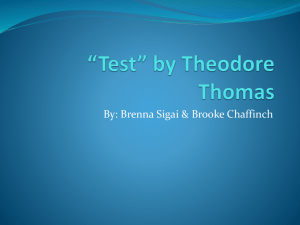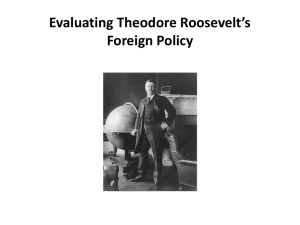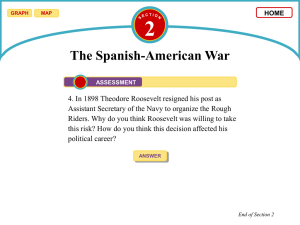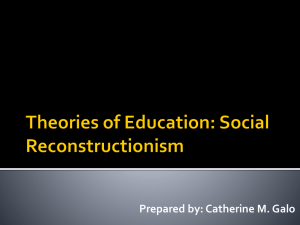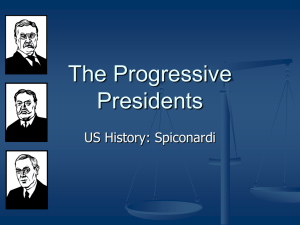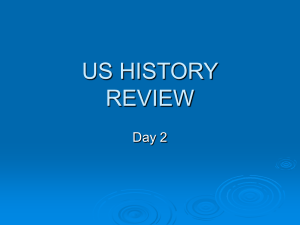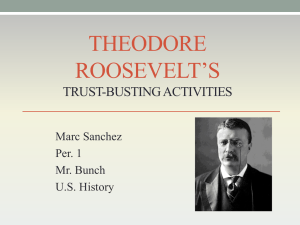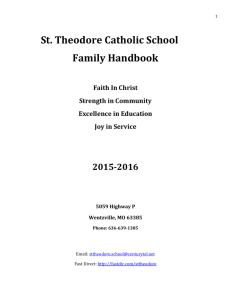A Royal Family Funeral - Kerrie Logan Hollihan
advertisement
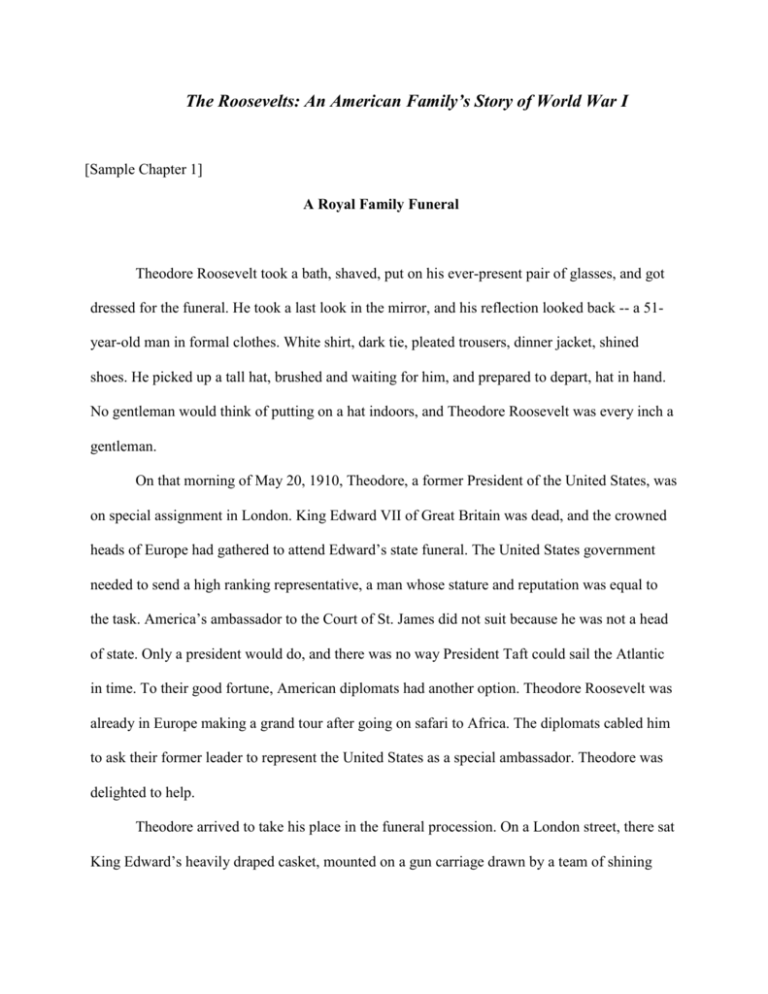
The Roosevelts: An American Family’s Story of World War I [Sample Chapter 1] A Royal Family Funeral Theodore Roosevelt took a bath, shaved, put on his ever-present pair of glasses, and got dressed for the funeral. He took a last look in the mirror, and his reflection looked back -- a 51year-old man in formal clothes. White shirt, dark tie, pleated trousers, dinner jacket, shined shoes. He picked up a tall hat, brushed and waiting for him, and prepared to depart, hat in hand. No gentleman would think of putting on a hat indoors, and Theodore Roosevelt was every inch a gentleman. On that morning of May 20, 1910, Theodore, a former President of the United States, was on special assignment in London. King Edward VII of Great Britain was dead, and the crowned heads of Europe had gathered to attend Edward’s state funeral. The United States government needed to send a high ranking representative, a man whose stature and reputation was equal to the task. America’s ambassador to the Court of St. James did not suit because he was not a head of state. Only a president would do, and there was no way President Taft could sail the Atlantic in time. To their good fortune, American diplomats had another option. Theodore Roosevelt was already in Europe making a grand tour after going on safari to Africa. The diplomats cabled him to ask their former leader to represent the United States as a special ambassador. Theodore was delighted to help. Theodore arrived to take his place in the funeral procession. On a London street, there sat King Edward’s heavily draped casket, mounted on a gun carriage drawn by a team of shining black horses. Theodore scanned the crowd of important dignitaries as they stepped into the glassenclosed coaches that lined up behind the king’s casket. He could see that Edward’s coffin bore several full-sized replicas of the King’s crowns, profound symbols of Great Britain’s power and empire. Roosevelt was smartly dressed for the occasion, but his formal suit could not compare to the glitter of braid and sparkle of gold on the uniforms worn by Europe’s leading kings and princes. He watched their solemn, but proud faces. He was struck by their military bearing. For better or for worse, Kaiser Wilhelm II of Germany and Prince Michael Alexandrovitch of Russia, brother of the tsar, made an impression on the American president. As Theodore approached his own carriage, he saw that his fellow rider, a French diplomat, was making a fuss. As the Frenchman had already reminded Theodore, they represented the only two nations at the funeral that were republics and, moreover, were the only representatives present who did not carry the blood of royalty. The angry-looking Frenchman felt that the British government had snubbed them. His voice shook as he pointed at a nicely appointed carriage and called it an outrage, that all the royals had glass coaches and that he and Theodore had to ride in a plain one. The open carriage did not offend the former President of the United States. He could not have cared less. Theodore had never heard of a glass coach “excepting in connection with Cinderella…” The Frenchman offered Theodore a seat on the right side of the carriage. Following to the diplomatic code of protocol, Theodore held the seat of honor. Facing them sat a Persian prince, also in uniform and wearing his decorations of ribbons and gold. As the Frenchman continued his rant, Theodore watched the man squirm in his seat. Theodore thought that the prince looked uncomfortable, “about as unaggressive as a rabbit in a cage with two boa constrictors.” With only the clatter of horse hooves to break the silence, the procession wound through London’s streets to Paddington Station as onlookers watched from the sidewalks. From there, a special train carried Theodore and the other dignitaries to Windsor, home to Windsor Castle and its Royal Chapel for King Edward’s funeral and burial. There the steam engine braked to a stop, and the mourners fell into line to follow the hearse, this time on foot. As Theodore walked uphill into Windsor, he mused about the pageant that had begun the night before and continued to unfold before his eyes. The previous evening, he had attended the dead king’s wake. The event had begun quietly, as scores of important men arrived at Buckingham Palace where the dead king lay in state. Theodore, like everyone else, followed protocol and sought out the new king, Edward’s brother George, to murmur soft words of sympathy. But as the room filled up, the mood shifted. Theodore watched as each man arrived and said some word of perfunctory condolence to the king, the host for the evening. Then, as Theodore saw, it was “on with the revel!” Kings and princes and emperors began to relax, and the solemn event, men only, transformed into a glamorous stag dinner followed by brandy and cigars. Theodore, who cared little for alcohol and did not smoke, drank in the experience. Famous men swarmed the ex-president. To them, Theodore was a puzzle, an American leader who was a political powerhouse, ranchman, soldier, man of letters, adventurer, and from one of New York’s best families, to boot. With his signature glasses, square-toothed grin, and exuberant cry “Bully!” when he liked something, Theodore was a character to meet and shake hands with. Theodore prided himself on his ability to judge a man, and as he mused about the plumed and medaled monarchs, he felt quite at home. In his mind, he sized up Europe’s rulers. Theodore found himself chatted up by the King of Spain, whom he liked, and Germany’s Kaiser Wilhelm II, who Theodore thought was a bully. King Haakon of Norway was as simple and unpretentious as he was good and charming. Archduke Franz Ferdinand seemed to be a religious fanatic. As for the new King George of England -- he was a man Theodore thoroughly liked. Now, as he took his seat in St. George’s Chapel, Theodore could see that King Edward’s funeral was a family reunion. Most of the heads of state were grandchildren of Queen Victoria of England, whose nine children had married into royal families across Europe. The monarchs of Great Britain, Germany, and Russia were first cousins. Many of them had the square face and jaw of Victoria’s husband Prince Albert. King George, Kaiser Wilhelm, and Prince Michael looked so much alike they could have been mistaken for brothers. Of all Europe’s major powers, only the imperial family of Austria-Hungary did not carry Victoria’s blood in their veins. As they marked the passing of Edward VII, the cousins showed a courtesy that masked the truth. Underneath the thin layer of pomp and protocol ran strong feelings about national power and pride. Unspoken questions floated among them like cigar smoke curling through the air. Whose empire stood on top? Who had the strongest army? The most skilled navy? Would Germany steal back land that France had won in a war forty years before? What if the German navy grew so powerful it could not resist attacking British ships? What if tiny Serbia broke free of Austria and joined the Russian Empire? How would Britain deal with Arabs who wanted their independence from the Turkish Empire? As Theodore looked on, he smelled the unrest. The former president, who had brought the warring Russia and Japan to the peace table in 1905, sensed rightly that Europe was a powder keg waiting to explode. Theodore was a keen student of history. One spark, and all the family pomp and protocol could blow into bits. Just four years later exactly that would happen, and this family reunion would be just a sentimental memory. The royal cousins would battle each other across Europe and the Middle East in a Great War, laying waste to the land and killing millions of soldiers and ordinary people. By Christmas of 1918, just ten years hence, most of Victoria’s royal grandsons would be disgraced -- or dead. And Theodore Roosevelt, together with his sons and daughters and the rest of America, would find himself in the thick of it all. ©Kerrie Logan Hollihan
